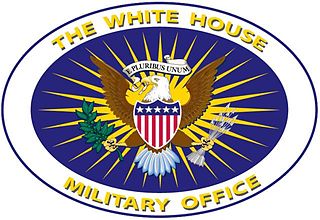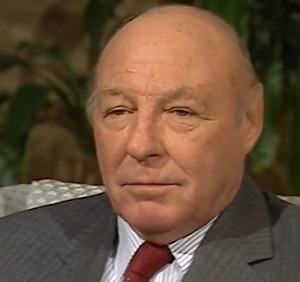Continuity of Operations (COOP) is a United States federal government initiative, required by U.S. Presidential Policy Directive 40 (PPD-40), to ensure that agencies are able to continue performance of essential functions under a broad range of circumstances. PPD-40 specifies certain requirements for continuity plan development, including the requirement that all federal executive branch departments and agencies develop an integrated, overlapping continuity capability, that supports the eight National Essential Functions (NEFs) described in the document.

The Mount Weather Emergency Operations Center is a government command facility in the U.S. Commonwealth of Virginia, used as the center of operations for the Federal Emergency Management Agency (FEMA). Also known as the High Point Special Facility (HPSF), its preferred designation since 1991 is "SF."
A number of military citadels are known to have been constructed underground in central London, dating mostly from the Second World War and the Cold War. Unlike traditional above-ground citadels, these sites are primarily secure centres for defence co-ordination.

Emergency Government Headquarters is the name given for a system of nuclear fallout shelters built by the Government of Canada in the 1950s and 1960s as part of continuity of government planning at the height of the Cold War. Situated at strategic locations across the country, the largest of these shelters are popularly referred to as "Diefenbunkers", a nickname coined by federal opposition politicians during the early 1960s. The nickname was derived from the last name of the Prime Minister of the day, John Diefenbaker, who authorized their construction. Over fifty facilities were built along several designs for various classes of service.

Continuity of government (COG) is the principle of establishing defined procedures that allow a government to continue its essential operations in case of a catastrophic event such as nuclear war.

The Presidential Service Badge (PSB) is an identification badge of the United States Armed Forces which is awarded to members of the U.S. Army, U.S. Navy, U.S. Air Force, U.S. Marine Corps, and U.S. Coast Guard as well as other members of the Uniformed Services, such as the U.S. National Oceanic and Atmospheric Administration Commissioned Corps and the U.S. Public Health Service Commissioned Corps, who serve as full-time military staff to the President of the United States.

The Diefenbunker, formerly known by its military designation, Canadian Forces Station Carp , is a large underground four-storey reinforced concrete bunker and nuclear fallout shelter located in the rural area of Carp, Ontario approximately 30 km (19 mi) west of downtown Ottawa. Between 1957 and 1961, during the Cold War the Government of Canada led by then Prime Minister John Diefenbaker authorized the Diefenbunker to be designed and built as the Central Emergency Government Headquarters in an attempt to ensure the continuity of government subsequent to a nuclear weapons attack by the Soviet Union. In 1994, CFS Carp was decommissioned and closed.

The nuclear football is a briefcase, the contents of which are to be used by the President of the United States to authorize a nuclear attack while away from fixed command centers, such as the White House Situation Room or the Presidential Emergency Operations Center. It functions as a mobile hub in the strategic defense system of the United States. It is held by an aide-de-camp.

The White House Communications Agency (WHCA), originally known as the White House Signal Corps (WHSC) and then the White House Signal Detachment (WHSD), was officially formed by the United States Department of War on 25 March 1942 under President Franklin D. Roosevelt. The organization was created to provide secure normal, secret, and emergency communications requirements in support of the president. The organization provided mobile radio, Teletype, telegraph, telephone and cryptographic aides in the White House and at "Shangri-La". The organizational mission was to provide a premier communication system that would enable the president to lead the nation effectively.

The White House Military Office (WHMO) is a department within the White House Office that provides military support for White House functions, including food service, presidential transportation, medical support, emergency medical services and hospitality services. The White House Military Office is headed by the White House Military Office Director.

Parks Reserve Forces Training Area (PRFTA), commonly known as Camp Parks, is a United States Army base located in Dublin, California, that is currently an active military and training center for U.S. Army Reserve personnel to be used in case of war or natural disaster.

Nuclear decommissioning is the process whereby a nuclear facility is dismantled to the point that it no longer requires measures for radiation protection. The presence of radioactive material necessitates processes that are potentially occupationally hazardous, expensive, time-intensive, and present environmental risks that must be addressed to ensure radioactive materials are either transported elsewhere for storage or stored on-site in a safe manner. The challenge in nuclear decommissioning is not just technical, but also economical and social.
A nuclear briefcase is a specially outfitted briefcase used to authorize the use of nuclear weapons and is usually kept nearby the leader of a nuclear weapons state at all times.

The National Nuclear Security Administration (NNSA) is a United States federal agency responsible for safeguarding national security through the military application of nuclear science. NNSA maintains and enhances the safety, security, and effectiveness of the U.S. nuclear weapons stockpile; works to reduce the global danger from weapons of mass destruction; provides the United States Navy with safe and effective nuclear propulsion; and responds to nuclear and radiological emergencies in the United States and abroad.

Tysons Corner Communications Tower, also known as Site E, is a classified United States military microwave tower located in Tysons Corner, Virginia. The tower is administered by the United States Army from Fort Belvoir.
The Emergency Federal Register is the planned replacement for the Federal Register, the official journal of the United States government, in the event publication of the Federal Register is suspended by presidential decree following the onset of a severe national calamity, such as a major nuclear attack or the mainland invasion of the United States. According to the Office of the Federal Register, the Emergency Federal Register "can only be activated under extreme national security conditions".
The Federal Relocation Arc is a network of facilities surrounding Washington, D.C. designed to ensure the survival of non-military components of the United States government in the event the capital city of Washington is rendered uninhabitable during a war or other serious emergency, such as a nuclear attack. Departments participating in the Federal Relocation Arc are primarily agencies that might not themselves be military targets but could have their operations disrupted should a serious event occur in the capital.

The White House to Treasury Building tunnel is a 761-foot (232 m) subterranean structure in Washington, D.C. that connects a sub-basement of the East Wing of the White House to the areaway which surrounds the United States Treasury Building. It was originally constructed in 1941 to allow the evacuation of the president from the White House to underground vaults inside the Treasury in the event of an emergency.

Warren "Bill" Gulley was an American military non-commissioned officer (NCO) who, in retirement, served (1968–1977) as the first civilian chief of the White House Military Office. In that position he amassed substantial political influence and established a sometimes feared reputation.
Orange One is a U.S. Navy–operated facility located in the Appalachian Mountains, extending underneath Camp David, the U.S. President's country retreat. Described in one account as a "fortress", it was designed for use by the president as a military headquarters during an emergency.














